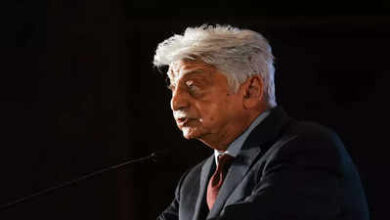Beginning on Tuesday, the RBI MPC’s three-day meeting is anticipated to keep the repo rate at 6.5%
The repo rate is anticipated to remain at 6.50 percent at the 3-day meeting of the RBI MPC, which begins on Tuesday and will determine how the country’s interest rates will move. This is true even if retail inflation is on the down. Governor of the Reserve Bank of India Shaktikanta Das serves as the chairman of the six-person rate-setting committee. On June 8th, the outcome of the MPC’s 43rd meeting would be made public.
“April CPI inflation at 4.7 percent was in line with expectations and benefited from a favorable base effect similar to the inflation print from March,” said Suvodeep Rakshit, senior economist at Kotak Institutional Equities. Overall, the RBI will see this print favorably and keep the June policy on hold while keeping a watchful eye on inflation. We’re still planning on the repo rate being the same for a while, subject to local economic prospects, central bank policies, and global growth prospects.
Inflation measured by the consumer price index (CPI) fell to an 18-month low of 4.7% in April.
“Although the impact of a favorable base effect related to the escalation of geopolitical conflict is likely to have peaked in April 2023, ICRA foresees the CPI inflation to remain range-bound at 4.7-5 per cent in May-June 2023,” said Aditi Nayar, chief economist and head (research & outreach) at ICRA. We expect the MPC to pause at its next meeting in light of a drop in CPI inflation below 5% and unexpectedly muted IIP growth. A change to rate reduction, however, seems far off.
The RBI has been instructed by the government to maintain CPI inflation at 4% with a 2% tolerance on each side.
Bank of Baroda Chief Economist Madan Sabnavis said that the RBI will likely keep interest rates on hold and keep the repo rate at 6.5%. “The cause is that April’s inflation reading was less than 5%, and May’s reading will be much lower. In light of this, the opinion would be that previous changes to the repo rate have had an impact on inflation, and another pause may thus be made, he added.
However, he said, the policy position would remain one of accommodation withdrawal given that deposits have already increased as a result of the announcement of the exchange of the Rs 2,000 notes, increasing liquidity.
The RBI will also keep an eye on the monsoon’s development and any potential negative impacts of El Nino, which might influence the kharif crop and therefore have an impact on pricing, according to analysts.
For the year, however, Sabnavis predicted a 25–50 basis point reduction in the repo rate, which would only apply after October.
According to Saket Dalmia, president of the PHD Chamber of Commerce and Industry, the RBI’s current course would sustain the country’s demand trajectory and keep GDP growth strong.
We commend the RBI on the fact that despite a 250 basis point hike in the repo rate, inflation has decreased by 310 basis points. The government was able to lower inflation by 1.24 basis points with a 1 basis point rise in the repo rate, according to the ERPR (Effectiveness Ratio of Policy Rate), which measures the relationship between an increase in the repo rate and a drop in inflation.







